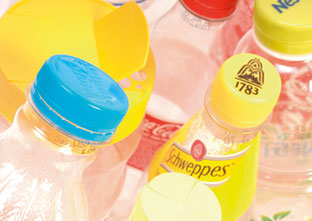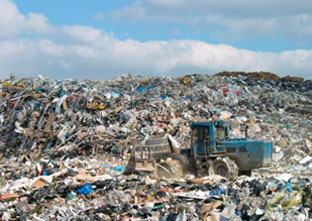The second life of plastics

How can we live without plastics today? Impossible, if we think of their countless applications in a number of industrial sectors where they have facilitated innovation, improved performance and, more often than not, cost savings. Yet, they are often subject to virulent attacks because of their impact, real or alleged, on the environment.
Savings in resources
Contrary to received ideas, plastics allow energy to be saved by reducing CO2 emissions.
If all the plastics that are present in all applications were replaced by other materials, an additional 22.4 million tonnes of crude oil would be consumed every year.
The corresponding greenhouse gases represent 30% of the reduction target defined in the Kyoto Protocol for the European Union! Ever-lighter bottles, ever-finer packaging films: the quantity of material used to produce plastic objects has continued to diminish dramatically.
So many resources saved upstream and so much waste reduced downstream.

 Selective sorting, recycling and energy recovery are the keys to optimal management of plastic waste.
Selective sorting, recycling and energy recovery are the keys to optimal management of plastic waste.
Unfortunately, in most countries of the European Union, many plastics still end up as landfill which is absurd.
A study by the Swiss consultancy Prognos has shown that 27% of the EU’s greenhouse gas emissions targeted by the Kyoto Protocol could be avoided if all the waste currently dumped as landfill was recycled or its energy recovered.
Putting a halt to landfill
 Obviously, the situation differs considerably from one country to another. Whilst Sweden or Denmark virtually no longer dump any plastic waste into landfill because they have an effective strategy, other countries such as Lithuania, Greece or even the United Kingdom and France are lagging far behind.
Obviously, the situation differs considerably from one country to another. Whilst Sweden or Denmark virtually no longer dump any plastic waste into landfill because they have an effective strategy, other countries such as Lithuania, Greece or even the United Kingdom and France are lagging far behind.
At the same time, it is essential to promote both recycling and energy recovery. The experience of the most proactive countries in this respect proves that the latter is never detrimental to the former, just the opposite.
The countries with high energy recovery rates also obtain good results in recycling. A strategy incorporating energy recovery does not, therefore, prevent effective recycling.
Whilst the recycling performance is comparable in most European countries, the same does not apply to energy recovery. Countries which are highly dependent on landfill must not only maximise their recycling potential but also rapidly develop their network of energy derived from waste.
Recycling
The PET bottle is the emblematic product of the selective collection and recycling of plastics. Today’s techniques make it possible to work in a closed circuit, i.e. to use reprocessed PET from bottles to make new ones.
In Europe today, some 40% of all these bottles are collected for recycling.
Whilst it is an outstanding success, the recycling of bottles cannot be the only one, although this is the case in France, a situation which should change over the next few years. Some countries such as Austria, Italy, Norway and Spain go further and also collect crates, tubes, pots and certain films.
Technological progress in sorting and cleaning and potential commercial opportunities are encouraging European countries to explore the “mixed” deposits of plastic waste.

Energy recovery
 evertheless, there are still some residual flows which are not suitable for economically viable recycling.
evertheless, there are still some residual flows which are not suitable for economically viable recycling.
For these, energy recovery clearly makes sense.
Manufactured from petroleum, plastics retain their calorific value at the end of their lives. They, therefore, represent an energy resource to be exploited.
When they are incinerated with the rest of household waste, they constitute an added fuel for processing units and contribute to their efficiency and profitability.
In Europe, a number of urban heating systems are supplied by steam from household waste incinerators. Plastic waste therefore constitutes a resource allowing a reduction in the use of “first life” fossil fuels.
Today, some 420 units process 64 million tonnes of municipal, commercial and industrial waste every year. The electricity produced in this way supplies 7 million homes and heats 13.4 dwellings. This represents a reduction of 23 million tonnes of CO2 a year. Just as if 11 million cars had been taken off the road.





